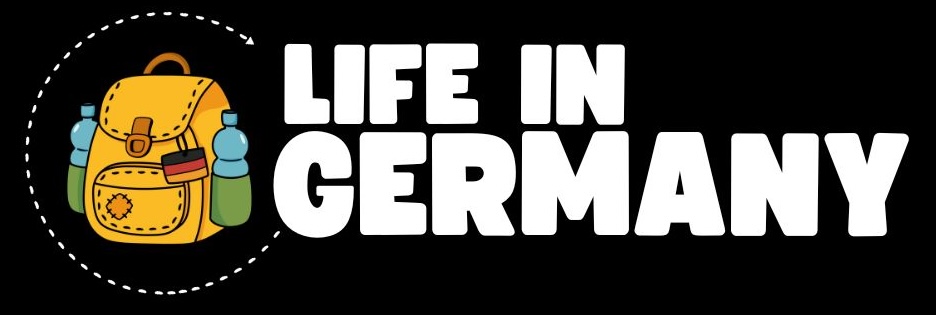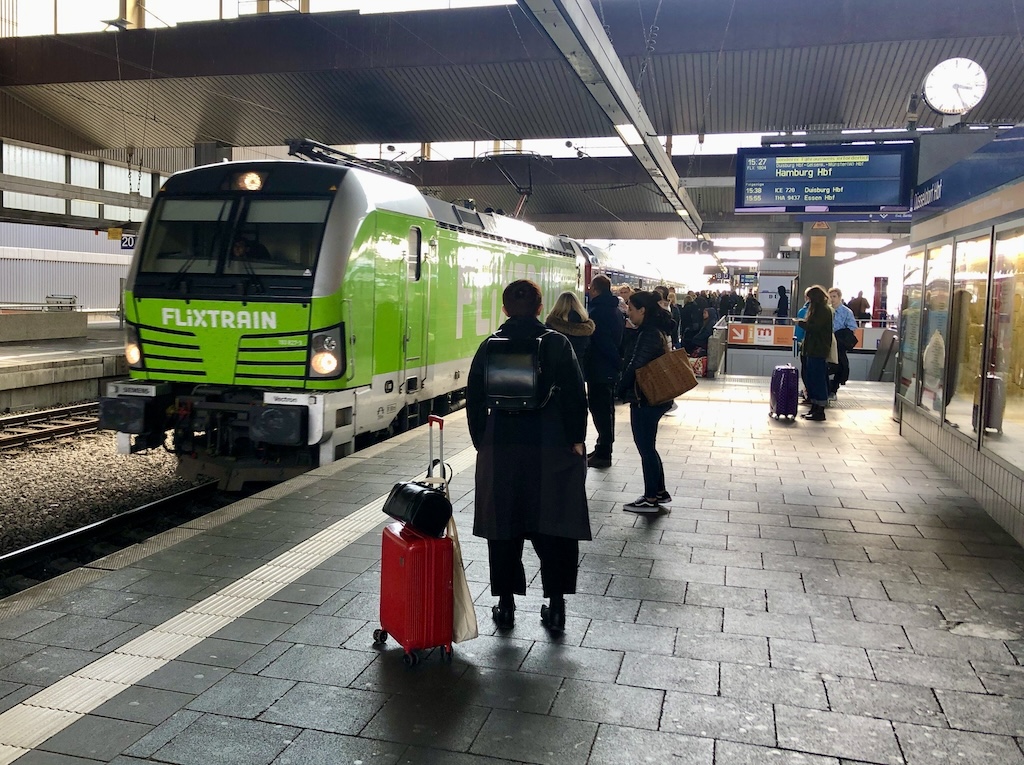A Simplified Guide to Understanding Transportation in Germany
There are so many transportation options to explore Germany’s charming cities, picturesque landscapes, and cultural treasures. Believe me, I have been lucky enough to do it for several years.
To get the most out of your experience, follow this guide to find the best transportation options for you (not every mode of transportation works for everyone, so think about your budget and where you’ll be living).
If you’d prefer a visual explanation of what you can expect here in Germany when it comes to getting around, be sure to join us in the Welcome Program.
Types of Transportation in Germany
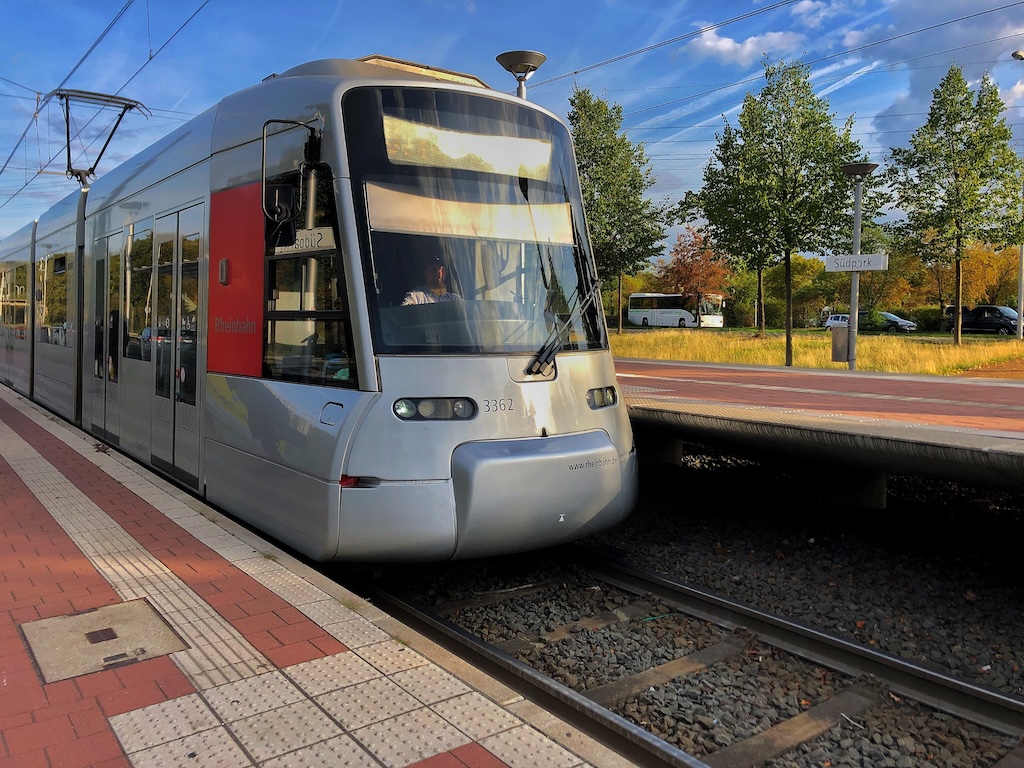
Local Public Transport (ÖPNV):
Similarly to many countries, Germany has buses, trains, and trams (above ground and underground), but depending on where you live in Germany, not all of these options may be available to you. Fear not; Germany is an extremely well-connected country, so even in the smallest of towns, there’s always a way to get around.
- U-Bahn (Subway): U-Bahns are the underground metro systems in major cities like Berlin, Munich, and Hamburg.
- S-Bahn (Suburban Train): S-Bahn’s connect city centers with suburban areas and nearby towns.
- Trams (Straßenbahn): These are popular in cities like Dresden, Düsseldorf, and Frankfurt, offering convenient above-ground travel.
- Buses: An extensive bus network covers urban and rural areas, filling in gaps where trains and trams don’t reach.
Transportation for special needs: While most major cities offer special services for people with disabilities, including accessible taxis, specialized public transport, and assistance at train stations, you’ll need to look into that in advance because each city will be different. I personally find that no matter how hard they try, many public stations are still very difficult to access with strollers, wheelchairs, etc.
Regional Public Trains in Germany:
- Regional Trains (Regionalbahn and Regional-Express “RE”): The regional trains are ideal for traveling between cities and towns within a state or region. These trains are faster than buses but slower than high-speed trains.
- Intercity Trains (IC) and EuroCity Trains (EC): These offer faster regional travel and connect major cities within Germany and across Europe.
Prices depend on the distance but are generally affordable, there are especially good deals with regional day passes like the Quer-durchs-Land Ticket or Länder-Tickets (state-specific day passes).
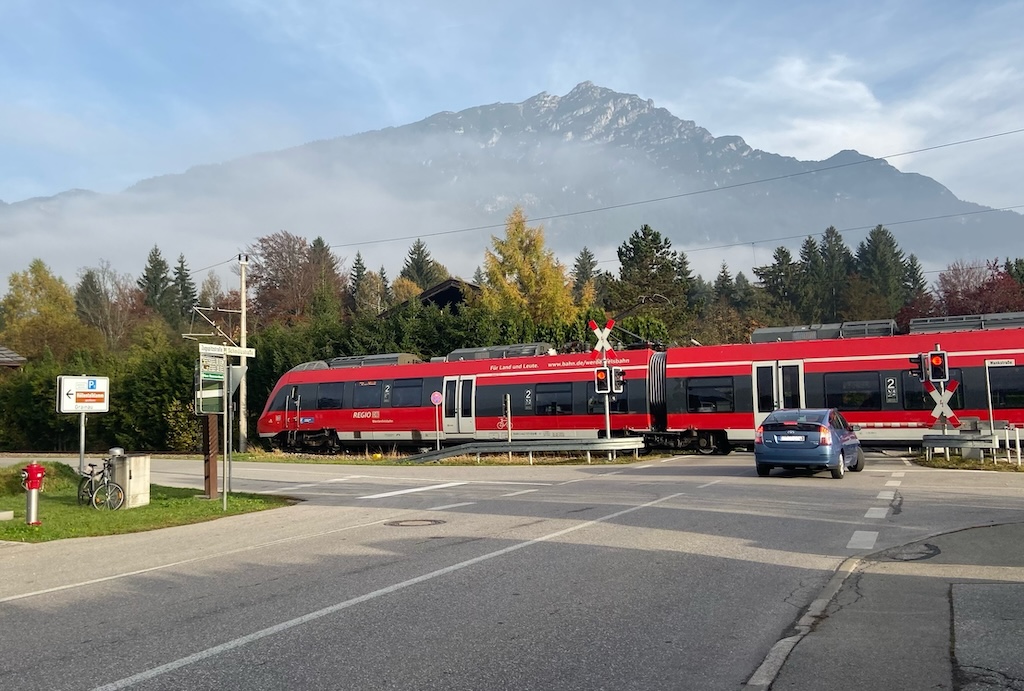
Long-Distance Trains in Germany:
- Deutsche Bahn (DB): Germany’s national railway company offers a wide range of services, from high-speed ICE trains to regional connections. While convenient, Deutsche Bahn can be expensive without discounts.
- Speed: ICE trains are the fastest way to travel between major cities, reaching speeds of up to 300 km/h. For example, the journey from Berlin to Munich takes just under 4 hours.
- Comfort: ICE trains offer comfortable seating, Wi-Fi (the connection is sometimes spotty), and dining cars. First-class tickets provide additional perks like more spacious seating and at-seat service.
- Cost: Tickets can be expensive, especially if booked last minute. However, booking in advance or using a BahnCard can significantly reduce costs.
- Flexpreis vs. Sparpreis: Deutsche Bahn offers two main ticket types: Flexpreis (flexible, can be used on any train that day) and Sparpreis (cheaper, but tied to a specific train). If you have fixed plans, go with the Sparpreis option.
- BahnCard: If you travel with high-speed trains often consider buying a BahnCard, which offers discounts of 25%, 50%, or even 100% (BahnCard 100) on all Deutsche Bahn tickets. They are valid for one year and offer deals for those under 27 well.
Planning to travel extensively within Germany or even explore neighboring countries? Look into the Interrail pass (the Eurail pass is the same concept as the Interrail pass if you are not an EU resident) or regional passes, such as the German Rail Pass.
- FlixTrain: A budget-friendly alternative to DB, offering lower fares on popular long-distance routes.
- It is a bit slower than ICE but will save you money making it an ideal option for budget-conscious travelers who don’t mind a longer journey.
Buses
Bus services are a great option to consider that connect towns, cities, and rural areas. Both regional and long-distance bus companies operate routes across the country and are typically an affordable and convenient option.
Note: this usually takes longer than a train but offers different routes and cheaper prices
Night Buses and Trains: These are great options to cover long distances over night. Deutsche Bahn offers night train services (EuroNight) that include sleeping cabins. Many cities also offer night bus services (Nachtbus), which operate on weekends or late hours when regular public transport is limited.
Private Rentals (Cars, Taxis, Bikes, etc.)
Taxis: Taxis are readily available in most German cities and can be hailed on the street or booked through taxi companies or ride-hailing apps like Uber. They offer a convenient door-to-door service, especially for shorter trips or when carrying heavy luggage. They can be pricier so keep that in mind when booking.
Want 20 EUR off your first 5 trips with Uber? Take my refer-a-friend code
Rental Cars: Germany has a well-developed road network, and rental car services are easily accessible. However, some cities may have restricted areas or require permits for driving. ShareNow is a great rental car option if you just quickly need a car for a day or two (we do this often) or for longer rentals, you can check out a site like MietwagenCheck.
Rental Bikes: Germany is super bike-friendly and offers extensive cycling routes. Many cities offer bike-sharing programs like voi or Tier, and renting or bringing your own bicycle is a great way to explore urban areas, parks, and scenic routes. We go into detail about this in the Welcome Program, too!
Rental Motor Scooters: Lime, Bird, and Tier operate in major cities across the country, and are a fun way to explore a city too!
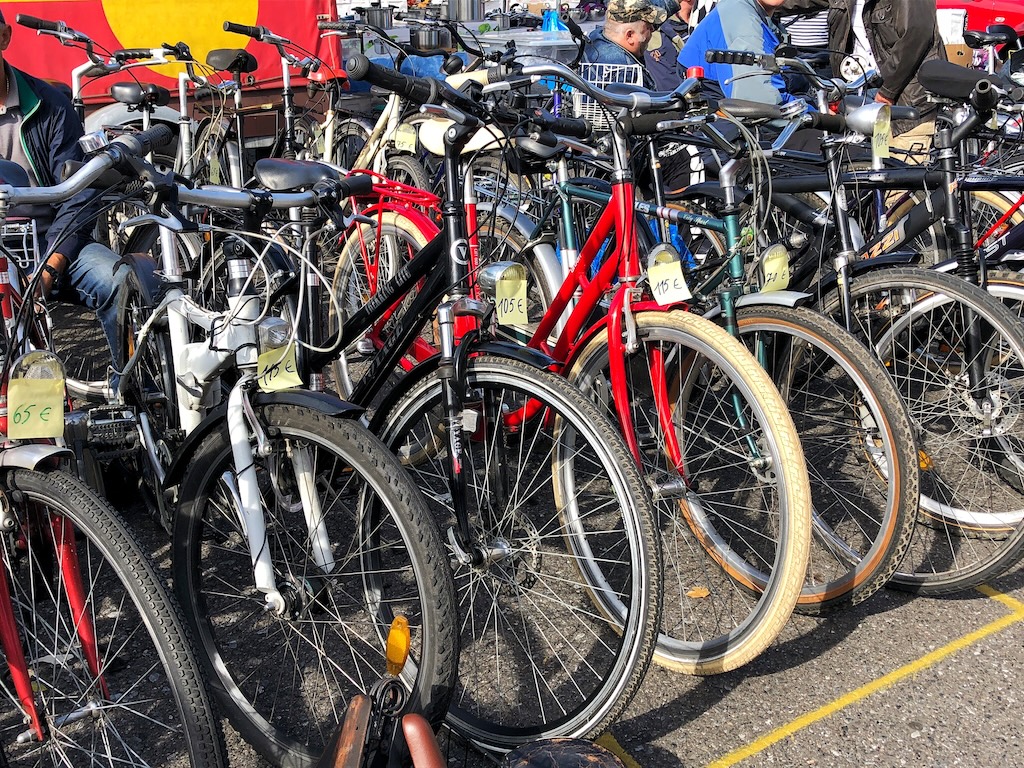
Getting Around Germany and Europe By Plane
For long-distance travel or if you want to reach more remote destinations, domestic and international flights are available from major airports across Germany. Popular airlines like Lufthansa, EuroWings, EasyJet, and Ryanair offer a variety of flight options within the country and beyond.
Frankfurt, Munich, Berlin, and Düsseldorf have the largest airports in the country with many connections worldwide.
Understanding the Costs of Transportation in Germany
Transportation costs in Germany can vary widely depending on the mode of transport, distance traveled, and the type of ticket you purchase. There are a lot of little details so here is what you need to know:
Local Public Transport:
- Single Tickets: Prices vary by city, but you can expect to pay between €2.50 and €3.50 for a single journey within a city.
- Day Passes: Typically cost between €7 and €10, allowing unlimited travel on local transport for one day.
- Weekly and Monthly Passes: These offer better value for frequent travelers, with prices ranging from €20 to €100 depending on the city and zones covered.
Keep reading to learn more about the DeutschlandTicket! ⬇️
Local Transport Tickets:
- Zones and Tariffs: Cities are often divided into zones, and ticket prices depend on how many zones you’re traveling through. Check out the zone map before buying a ticket.
- Validation: Tickets must be validated before boarding or right when you hop on board. Look for the small machines on platforms or inside buses and trams. You can get a pretty hefty fine if you forget to validate.
- Mobile Tickets: Many cities offer mobile apps (like the BVG app in Berlin or MVV app in Munich) where you can purchase and validate tickets directly from your smartphone.
The DeutschlandTicket
You may have heard of the popular 9 Euro Ticket, or even the 49 Euro Ticket (its successor), but now, let’s just refer to it as the DeutschlandTicket (since it’s increased in price to 58€ as of 01/2025). This ticket offers unlimited travel on local and regional public transport across Germany for 58 euros per month. This ticket is of GREAT value for anyone who frequently uses public transport — like going to work, grocery shopping, etc.
- Coverage: The ticket is valid on all local and regional transport throughout Germany, including buses, trams, U-Bahn, S-Bahn, and regional trains. However, it is not valid for high-speed ICE or IC/EC trains.
- Purchase: It is available online, via mobile apps, or at ticket counters. The ticket renews monthly and can be canceled at the end of each month. You can even add it to your Apple Wallet!
For more details on ticket options and where to buy them, check out the Deutsche Bahn website. If you’re wondering whether the DeutschlandTicket is still really worth it, continue reading here.
Want some more money-saving tips?!
- Book in Advance: No matter what provider you are using, book your tickets as early as possible to get the best prices.
- Use Regional Day Passes: If you’re traveling within a specific region, consider buying a day pass that offers unlimited travel on all regional trains and local transport.
- Consider Alternatives: BlaBlaCar can be an affordable and flexible option, especially for last-minute travel.
- Price Comparison Websites: Omio, SkyScanner, and Google Flights are great sites to find the best deals on travel options.
Join our Welcome Program for even more tips and tricks to help you navigate life in Germany.
Tips for Using Public Transport in Germany
- Avoid traveling during peak hours (7-9 AM and 5-7 PM) if possible, as trains and buses get very crowded during these times.
- Be ready for a ticket inspection, especially on regional trains and buses. Keep your ticket handy to avoid fines.
- Most public transport options are accessible to those with mobility issues! However, older stations or ones undergoing construction might lack elevators, so keep that in mind when planning your trips.
- While most ticket machines and apps offer English options, smaller towns might have limited English signage. Learning a few key German phrases or using a translation app can be helpful. DeepL and Google Translate should do the trick.
- People are typically pretty quiet when using public transit in Germany. Avoid having loud conversations and respect people’s personal space (unless the train is filled to the brim).
Planning your transportation in and around Germany will help you have a much smoother travel experience. By researching different transportation options, considering regional passes, utilizing public transportation, renting cars or bicycles, and planning your itinerary, you’ll be well-prepared to explore the diverse landscapes and vibrant cities of Germany. There are a lot of different transportation options, but don’t let that stop you from having an unforgettable adventure in this beautiful country.
And when in doubt, feel free to just ask me! And don’t forget to join the Welcome Program, too!
Digital Support
Explore my collection of practical, family-friendly digital resources – designed to support multicultural families in feeling confident, connected, and at home in Germany.

Free 12-Step Checklist

1-on-1 Video Call

Life in Germany Welcome Program

Life in Germany for Kids
EXCELLENTTrustindex verifies that the original source of the review is Google. "Life in Germany" is an incredibly useful tool for those who want to move to Germany, for any reason. The services offered are really valuable; all the information -from learning the language, to the bureaucracy, to the most enjoyable aspects such as leisure, food and drink, shopping, travels- are clearly delivered and make life for expats so much easier and pleasant. Articles are also updated often and fact-checked. Also, I strongly recommend to check out "Life in Düsseldorf", if you're moving to this city, from the same creator, Jenna, which with her hard work, dedition and kindness has been helping hundreds of workers and students from all over the world and with different backgrounds to make their dreams true. Thank you, Jenna. Keep up with the great work!Trustindex verifies that the original source of the review is Google. ExcellentTrustindex verifies that the original source of the review is Google. I love every information. Keep it up!Trustindex verifies that the original source of the review is Google. Thanks a lot dear for preparing the checklist for all of us.Verified by TrustindexTrustindex verified badge is the Universal Symbol of Trust. Only the greatest companies can get the verified badge who has a review score above 4.5, based on customer reviews over the past 12 months. Read more
Get Culturally Ready
I’ve spent the last 10 years collaborating with experts in various fields and perfecting the process for moving to Germany. However, that doesn’t mean my process was easy! I have so many stories to tell and tips to share.
